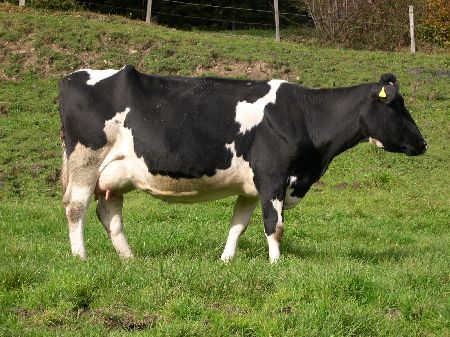Internal cooperation partners:
Steinwidder Andreas, Priv. Doz. Dr. DI
Podstatzky-Lichtenstein Leopold, Dr.
Project status: 100%
Problem/task:
The so-called DCAB concept (anion-cation feeding) has recently been successfully used in dairy cows to prevent the frequently occurring metabolic disease parturient parsy. The DCAB concept deals with the balance of the anions chloride and sulfate and the cations potassium and sodium in the feed ration, stated in meq/kg DM. While a positive cation/anion ratio of +100 to +200 meq/kg DM is aimed for and usually achieved during lactation, in the last 2-3 weeks before calving an anion excess of approx. -100 to -150 meq /kg DM should be aimed for. This negative cation/anion balance can only be achieved by adding acidic salts (Mg, NH4, Ca sulfates, Ca chlorides) to the dry cows' ration. The influence on the acid-base balance is manifested in the development of metabolic acidosis, as a result of which the urine and blood pH values fall.
Overall, this leads to a positive influence on the mineral balance. Adult cattle usually survive this temporary acidotic state without complications. In contrast, the acid-base balance of newborn calves is in a particularly unstable state. Various external influences such as diarrhea, respiratory problems and dietary errors can quickly lead to serious health problems. In animals pre-stressed by the DCAB concept, the buffering capacities of the blood are particularly stressed and are quickly exhausted. The project aims to investigate the effects of the DCAB concept on vital parameters and the acid-base balance in dairy cows and calves.
Results:
Hypocalcemic parturient paresis is, in most cases, a disease induced by feeding and is therefore often (at least theoretically) preventable. Exact ration calculations, regular surveys of feed intake, optimal adjustment of body condition and especially the correct use of mineral mixtures, especially during the dry period, are essential prerequisites for this Preventing parturient palsy. The use of acidic salts is one of several, sometimes very effective, methods for preventing parturient paresis. The only other options that are mentioned here are the oral administration of Ca salts in gel or bolus form or the one-time injection of vitamin D3.
The actual main cause of the disease, namely an incorrect supply of minerals due to too high a supply of calcium and potassium (and too little supply of phosphorus and magnesium in other forms of paresis) before calving, is unfortunately all too often forgotten by representatives and users of the individual prophylactic methods.
As a basic requirement for the successful use of an anion-rich ration, the following points must be taken into account: chemical analysis of the ion content (Na, K, Cl, S), avoidance of cation-rich ration components, calculation of the DCAD and substitution with acidic salts, whereby the cation/anion ratio of the dry ion is taken into account The addition of acidic salts should not exceed 180 meq/kg T, otherwise the amount of acidic salts to be used becomes too high (depression of feed intake), regular checking of the urine pH value (better: NSBA) and feed intake.
The determination of urinary NSBA, which turned out to be a much more sensitive method than measuring the urinary pH value for assessing acidification, is not routinely offered in practice.
When acidic salts are used, neonates are likely to be exposed to acidosis, which is why management and hygiene in calf rearing are of particular importance in these companies.







